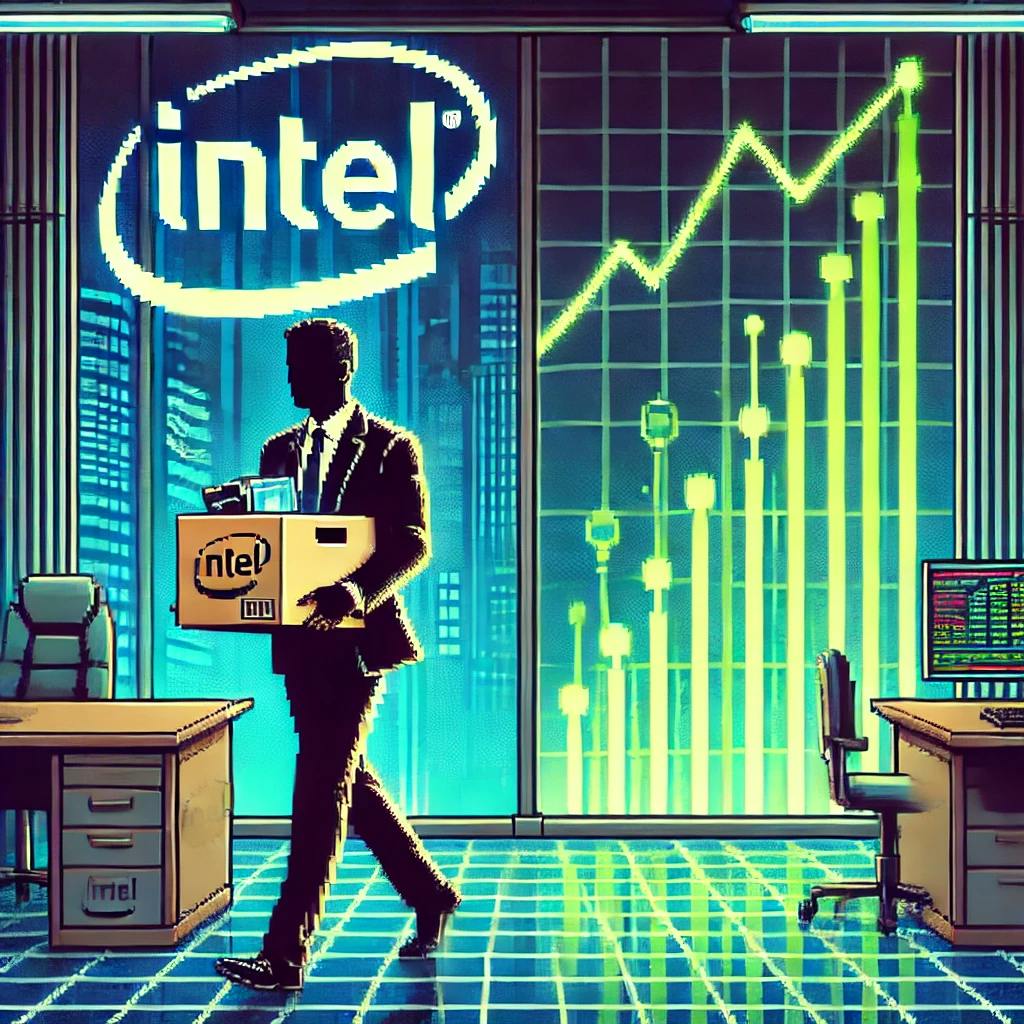Intel Corporation, a technological stalwart in the semiconductor industry, has recently undergone a significant leadership change with the departure of CEO Pat Gelsinger (
Intel's Historical Context and Recent Challenges
Founded in 1968, Intel has been a pioneer in developing microprocessors, playing a pivotal role in the personal computer revolution. However, in recent years, the company has faced intensified competition from rivals like NVIDIA and AMD, particularly in the AI and data center markets. Under Gelsinger's tenure, which began in February 2021, when the stock price was approximately $55, Intel aimed to regain its technological edge. Despite initiatives such as the introduction of AI chips like Gaudi3 and plans to expand manufacturing capabilities, the company struggled to keep pace with competitors. Notably, Intel's stock price declined by approximately 60% during Gelsinger's leadership, reflecting investor concerns over the company's strategic direction and execution (
Missed Opportunities in the AI Boom
The AI industry has experienced exponential growth, with companies like NVIDIA leading the charge through advanced GPU technologies essential for AI computations. Intel's delay in capitalizing on this trend, coupled with its decision to forgo early investments in AI innovators like OpenAI, positioned the company at a disadvantage. In contrast, Microsoft's strategic investment in OpenAI has yielded significant returns, underscoring the importance of timely engagement in emerging technologies (
Parallels with Other Technology Companies After a Notable CEO Departs
Several notable examples illustrate how leadership changes have revitalized companies:
- Apple Inc.: Steve Jobs' return to Apple in 1997 marked a turning point for the company. At the time of his departure in 1985, shares were approximately $0.07 (adjusted for stock splits). By late 1998, a year after his return, shares had risen to $0.31, signaling renewed investor confidence (
Investopedia ). - Starbucks: In 2024, Starbucks experienced a challenging year with declining sales and stock value. The appointment of former Chipotle CEO Brian Niccol brought a strategic shift aimed at simplifying operations and revitalizing the brand. This leadership change boosted investor confidence, resulting in a 24% stock surge (
Barron's ). - Under Armour: The return of founder Kevin Plank as CEO led to a significant stock surge of 20% following stronger-than-expected earnings, indicating early success from leadership changes (
Barron's ). - Google (Alphabet): When Sundar Pichai took over as CEO from co-founders Larry Page and Sergey Brin in 2019, Alphabet underwent a major transformation. Under his leadership, the company expanded into AI and cloud computing, driving stock performance to new highs (
CNBC ). - IBM: When Ginni Rometty stepped down as CEO and was replaced by Arvind Krishna in 2020, IBM refocused on cloud computing and AI, leading to a significant stock resurgence (
Forbes ). - Microsoft: The transition from Steve Ballmer to Satya Nadella in 2014 transformed Microsoft into a cloud-first company, significantly boosting its market value and stock performance (
The Verge ). - Tesla: When Elon Musk assumed full control of Tesla as CEO, his leadership propelled the company into new markets, securing dominance in electric vehicles and renewable energy solutions, driving stock gains (
Bloomberg ). - Yahoo: The appointment of Marissa Mayer as CEO in 2012 led to a brief resurgence in Yahoo's stock price, though long-term struggles persisted. Her leadership underscored the impact a high-profile CEO change can have on investor confidence (
The Guardian ). - Adobe: The transition from Bruce Chizen to Shantanu Narayen in 2007 set the stage for Adobe's successful pivot to a subscription-based business model, fueling long-term stock growth (
Business Insider ). - Netflix: Reed Hastings' transition to an executive chairman role in 2023 allowed Ted Sarandos and Greg Peters to take over as co-CEOs, maintaining Netflix's industry dominance and stabilizing stock performance (
Hollywood Reporter ).
Intel's recent leadership change, prompted by a period of underperformance and missed opportunities in the AI sector, marks a decisive inflection point for the company. Historical precedents from companies like Apple, Microsoft, and Adobe demonstrate that such transitions can drive revitalization and substantial stock appreciation when paired with aggressive strategic realignment.
Intel's deep-rooted expertise in semiconductor innovation, coupled with its formidable manufacturing infrastructure, provides a strong foundation for resurgence. If the company can successfully leverage AI advancements, expand foundry operations, and capitalize on emerging market demands, it stands to reclaim dominance in a rapidly evolving industry. The leadership shift signals a commitment to transformation, with the potential to position Intel as a frontrunner in next-generation computing and long-term value creation for investors.
Additional Resource About the Intel CEO Reboot:
Intel CEO Gelsinger's removal raises doubts over turnaround plan HackerNoon Analysis: Why Intel’s CEO Change Matters CNBC: Intel Stock Reaction to CEO Departure The Verge: Microsoft and OpenAI Investment Bloomberg: Intel CEO Exit and Market Impact Level Fields AI: Stock Trends Post CEO Departures Financial Times: Intel’s Future After Leadership Shakeup Forbes: CEO Turnover and Market Performance MarketWatch: How New Leadership Could Boost Intel’s AI Game WSJ: The Broader Implications of Intel’s CEO Transition


